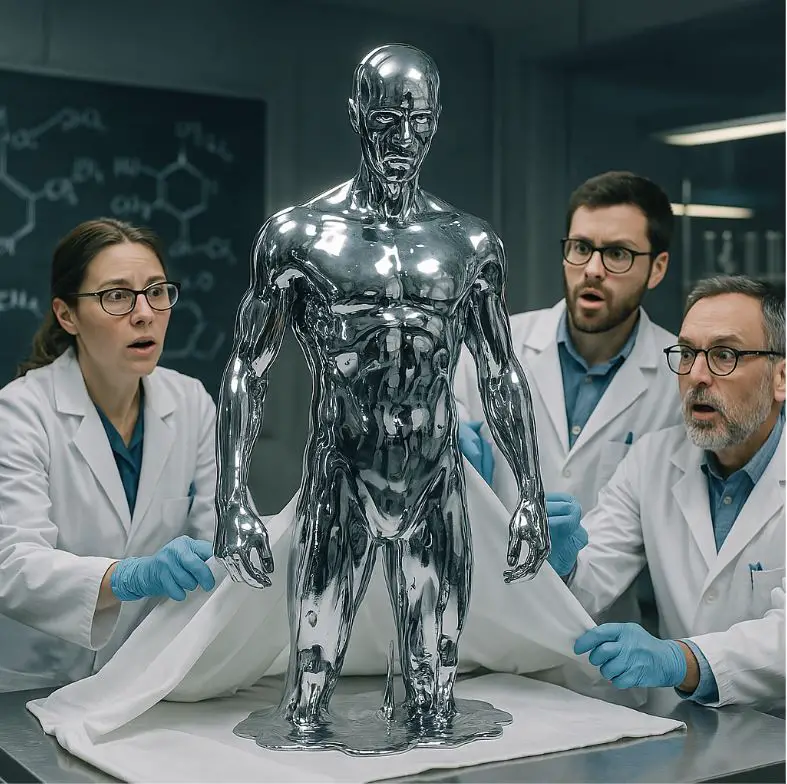
In a breakthrough that seems ripped straight from the science fiction screen, a team of international scientists has unveiled a liquid robot that mirrors the characteristics of the famed T-1000 from “Terminator 2.” This innovative creation is a major leap forward in robotics, promising to redefine the limits of machine adaptability and resilience.
Developed over a five-year period at the Advanced Robotics Institute (ARI), the robot is constructed from a newly engineered alloy infused with smart polymers, giving it a fluid, self-healing quality. According to Dr. Elena Martinez, lead researcher at ARI, the liquid robot is capable of changing its shape to navigate through challenging terrains, much like liquid metal flowing through narrow crevices. “Our creation can adapt on the fly to its surroundings. It can reassemble itself if damaged, which opens new avenues for robotics in hazardous environments,” she stated.
The innovative design integrates advanced sensor technology and artificial intelligence, enabling the robot to assess its surroundings and respond in real time. Early tests have shown that the robot can reshape its body to overcome obstacles, seal wounds, and even mimic simple tools. These capabilities could prove invaluable in disaster response scenarios where conventional robots might fail. “Imagine a robot that can squeeze through collapsed structures or self-repair after being compromised by debris,” explained Dr. Martinez. “It’s a game changer for search and rescue operations.”
Despite the excitement, experts urge caution. Concerns have been raised about the ethical implications and potential risks of deploying such advanced technology. “While the liquid robot offers promising applications, it also raises questions about control and misuse,” commented Professor James O’Reilly, a robotics ethicist not affiliated with ARI. “We need robust safeguards to ensure this technology is used responsibly.”
The team at ARI is currently collaborating with governmental agencies to establish comprehensive safety protocols. Future plans include further refinement of the robot’s capabilities, with aspirations to integrate advanced communication systems and more nuanced decision-making algorithms. As the research progresses, scientists believe that this technology could eventually extend into areas like space exploration, where its adaptive properties would be particularly beneficial.
As this breakthrough blurs the line between fiction and reality, the scientific community watches closely. The successful creation of a liquid robot not only signifies a milestone in robotics but also challenges our perceptions of what machines can achieve. With further development, this technology could open up new frontiers in both civilian and defense applications, heralding a new era of adaptive robotics.



